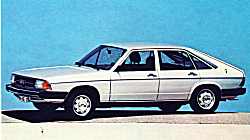HCCI has characteristics of the two most popular forms of combustion used in SI (spark ignition) engines- homogeneous charge spark ignition (gasoline engines) and CI engines: stratified charge compression ignition (diesel engines). As in homogeneous charge spark ignition, the fuel and oxidizer are mixed together. However, rather than using an electric discharge to ignite a portion of the mixture, the density and temperature of the mixture are raised by compression until the entire mixture reacts spontaneously. Stratified charge compression ignition also relies on temperature and density increase resulting from compression, but combustion occurs at the boundary of fuel-air mixing, caused by an injection event, to initiate combustion.
The defining characteristic of HCCI is that the ignition occurs at several places at a time which makes the fuel/air mixture burn nearly simultaneously. There is no direct initiator of combustion. This makes the process inherently challenging to control. However, with advances in microprocessors and a physical understanding of the ignition process, HCCI can be controlled to achieve gasoline engine-like emissions along with diesel engine-like efficiency. In fact, HCCI engines have been shown to achieve extremely low levels of Nitrogen oxide emissions (NOx) without an aftertreatment catalytic converter. The unburned hydrocarbon and carbon monoxide emissions are still high (due to lower peak temperatures), as in gasoline engines, and must still be treated to meet automotive emission regulations.
Recent research has shown that the use of two fuels with different reactivities (such as gasoline and diesel) can help solve some of the difficulties of controlling HCCI ignition and burn rates. RCCI or Reactivity Controlled Compression Ignition has been demonstrated to provide highly efficient, low emissions operation over wide load and speed ranges
HCCI provides up to a 30-percent fuel savings, while meeting current emissions standards.
Since HCCI engines are fuel-lean, they can operate at a Diesel-like compression ratios (>15), thus achieving higher efficiencies than conventional spark-ignited gasoline engines.[1]
Homogeneous mixing of fuel and air leads to cleaner combustion and lower emissions. Actually, because peak temperatures are significantly lower than in typical spark ignited engines, NOx levels are almost negligible. Additionally, the premixed lean mixture does not produce soot.[2]
HCCI engines can operate on gasoline, diesel fuel, and most alternative fuels.[3]
In regards to gasoline engines, the omission of throttle losses improves HCCI efficiency
Controlling HCCI is a major hurdle to more widespread commercialization. HCCI is more difficult to control than other popular modern combustion engines, such as Spark Ignition (SI) and Diesel. In a typical gasoline engine, a spark is used to ignite the pre-mixed fuel and air. In Diesel engines, combustion begins when the fuel is injected into compressed air. In both cases, the timing of combustion is explicitly controlled. In an HCCI engine, however, the homogeneous mixture of fuel and air is compressed and combustion begins whenever the appropriate conditions are reached. This means that there is no well-defined combustion initiator that can be directly controlled. Engines can be designed so that the ignition conditions occur at a desirable timing. To achieve dynamic operation in an HCCI engine, the control system must change the conditions that induce combustion. Thus, the engine must control either the compression ratio, inducted gas temperature, inducted gas pressure, fuel-air ratio, or quantity of retained or re-inducted exhaust


